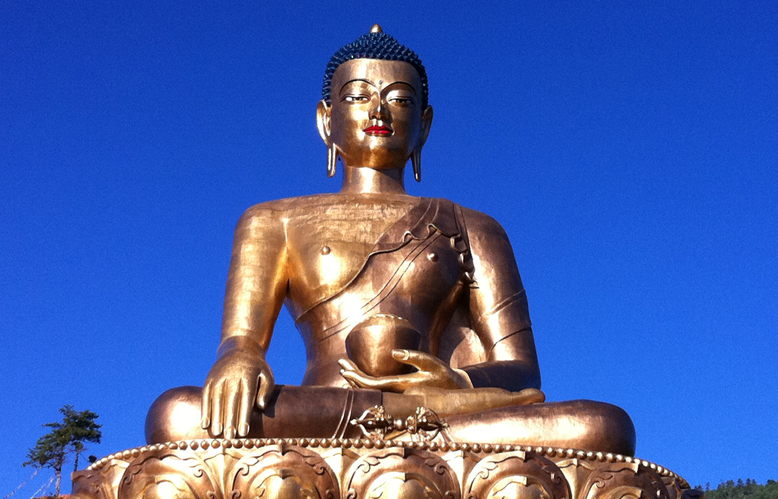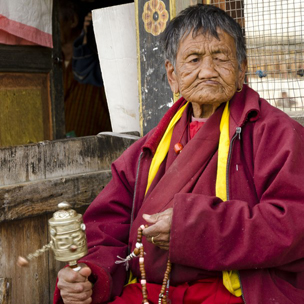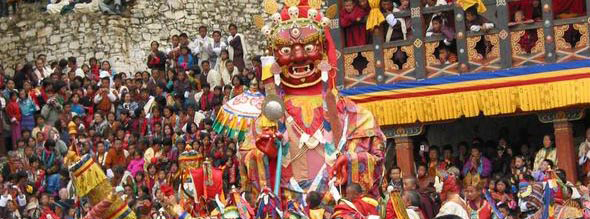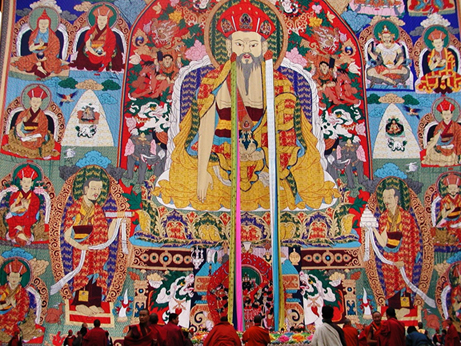
Religion in Bhutan

Lord Buddha's statue at Kuenselphodrang Nature Park
which towers over Thimphu town

Bhutan Buddhism
Festivals of Bhutan
Tsechu (‘tse’ meaning holy
and ‘chu’ meaning the tenth) is an annual religious festival
that is celebrated on the 10th day of the Bhutanese Lunar calendar. The
festival commemorates the birth of Guru Rinpoche who, legend has it, was
born of a lotus flower and came to Bhutan in 746 AD, bringing Buddhism
to the country. Tsechus are the biggest festival in the country (lasting
3 to 5 days). It is held at different times around the Kingdom. It is
for this festival that Bhutanese dress themselves in their finest attire
and make a day of it. They flock to the celebrations often with homecooked
picnic lunches.  The
centre piece of attraction are the various mask dances that have many
themes from ground purification and victory over the evil spirits to the
conduction of one's Karma and depiction of the eight forms of manifestation
that the Guru took to overcome various deities in propagating Buddhism.
The picture above was taken at Paro tsechu.
The
centre piece of attraction are the various mask dances that have many
themes from ground purification and victory over the evil spirits to the
conduction of one's Karma and depiction of the eight forms of manifestation
that the Guru took to overcome various deities in propagating Buddhism.
The picture above was taken at Paro tsechu.

